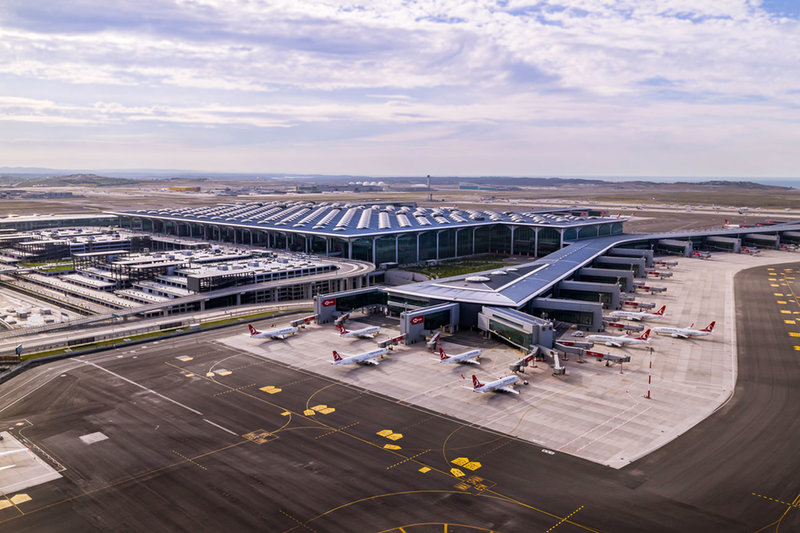Propulsion
DHL bets on electric cargo planes to deliver on zero emissions
DHL Express has announced the order of 12 electric-aircraft from Seattle-based manufacturer Eviation to add to its electric fleet in an effort to reduce the company’s CO2. Ilaria Grasso Macola profiles the aircraft and what benefits they will bring to the company’s roadmap to sustainability.
Image: copyright
DHL’s air cargo subsidiary DHL Express has announced its recent order of 12 all-electric aircraft from Seattle-based manufacturer Eviation that will be added to the company’s fleet of powered vans and bikes.
Named Alice, the planes are scheduled to be operational on DHL Californian routes from 2024.
“We firmly believe in a future with zero-emission logistics,” said DHL Express CEO John Pearson following the announcement. “Therefore, our investments always follow the objective of improving our carbon footprint.
“On our way to clean logistics operations, the electrification of every transport mode plays a crucial role and will significantly contribute to our overall sustainability goal of zero emissions.
Discovering Alice
Scheduled to have its inaugural flight later this year, the Alice model will be flown by a single pilot and will only need 30 minutes or less to charge per hour of flight, carrying a maximum of 1,200kg over a range of 815km.
The company unveiled the model’s new designs on 1 July, changing the aircraft’s tail from a V-tail to a T-tail and using two Magni650 electric motors, reported Aviation International News.
The planes – able to operate in all the environments that are currently serviced by piston and turbines aircraft – will rely on software that will monitor flight performance to ensure maximum efficiency.
“From day one, we set an audacious goal to transform the aviation industry and create a new era with electric aircraft,” explained Eviation CEO Omer Bar-Yohay at the time of the announcement. “Partnering with companies like DHL who are the leaders in sustainable e-cargo transportation is a testament that the electric era is upon us.
“This announcement is a significant milestone on our quest to transform the future of flight across the globe.”
According to Bloomberg, the Seattle-based company initially thought of Alice as a nine-seater craft but turned it into a cargo aircraft to accommodate DHL’s order.
“With Alice’s range and capacity, this is a fantastic sustainable solution for our global network,” comments DHL Express global network operations and aviation executive vice-president Travis Cobb.
“The next time you order an on-demand package, check if it was delivered with a zero-emission aircraft like DHL will be doing,” adds Eviation executive chairman Roei Ganzarski.
“With on-demand shopping and deliveries on a constant rise, Alice is enabling DHL to establish a clean, quiet and low-cost operation that will open up greater opportunities for more communities.”

Credit:
DHL’s roadmap sustainability
“Our aspiration is to make a substantial contribution in reducing our carbon footprint, and these advancements in fleet and technology will go a long way in achieving further carbon reductions,” adds Cobb. “For us and our customers, this is a very important step in our decarbonization journey and a step forward for the aviation industry as a whole.”
In Q1 of 2021, DHL announced that it will invest €7bn to reduce its production of CO2 emissions by 2030. As part of its roadmap to sustainability, the company will deliver 80,000 e-vehicles to be deployed for last-minute deliveries, resulting in a 60% electrification of the fleet.
“With our sustainability roadmap, we are stepping up our efforts and explicitly promoting the Sustainable Development Goals of the United Nations,” said DHL Group CEO Frank Appel back in March.
DHL added that funding will also be distributed towards the development of sustainable aviation fuels and the construction of climate-neutral buildings.
Sustainable, clean fuel alternatives are elementary for climate-neutral logistics in a globalized world.
“Sustainable, clean fuel alternatives are elementary for climate-neutral logistics in a globalized world,” according to Appel. “That's why we will engage even more intensively in initiatives and strengthen cross-industry exchange to develop a global strategy and standards here.”
DHL has committed to reducing the predicted 46 million tonnes of CO2 to 29 million by the end of the decade. To show the group’s dedication to achieve these interim targets as well as to the 2050 net-zero emissions, DHL will take into account the achievement of Environmental, Social and Governance (ESG) targets when calculating the remuneration of its board of management.
“We are turning our yellow group into a green company and making an important contribution to our planet and society,” adds Appel.
“I am convinced that by focusing even more on our ESG goals, we will remain the first choice for customers, employees and investors - and thus lay the foundations for long-term economic success."
Electric aircraft adoption elsewhere
DHL Group is not the only company working in the sector to introduce environmentally friendly ways to transport packages.
Amazon Prime Air – Amazon’s electric drone delivery service currently in development – has been in the spotlight since its inception in 2016. In the US, after years of uncertainty surrounding the status of its drone development, the Federal Aviation Authority granted the service regulatory clearance.
Owned by Google’s parent company Alphabet, drone delivery service Wing has been operating in the US, Australia, and Finland, conducting more than 100,000 flights. Wing’s electric and energy efficient drones deliver small items such as food, medicine, and household items that weigh less than 1.5kg.
Once a customer submits the order through the service’s app, the drone flies to the delivery facility to pick up the package, flying at a height of 45m to deliver the package. Once close to the delivery point, the drone slowly descends to a height of 7m, drops the package without any assistance and once the delivery is complete, return to cruising height.
Main Image: DHL Express orders 12 electric cargo planes from Eviation. Credit: DHL Express